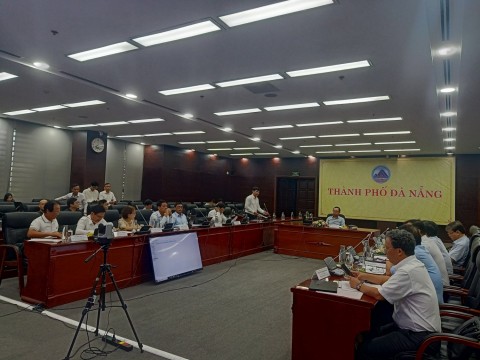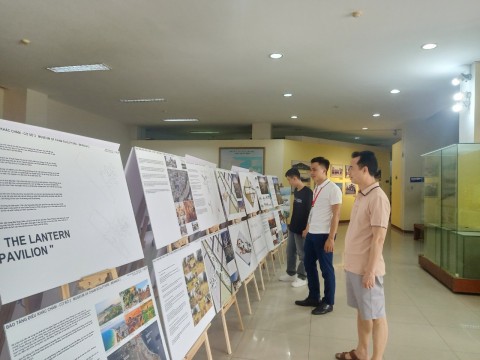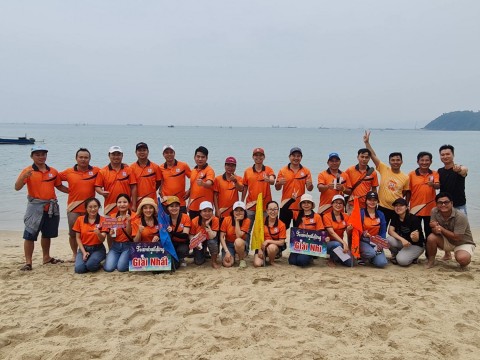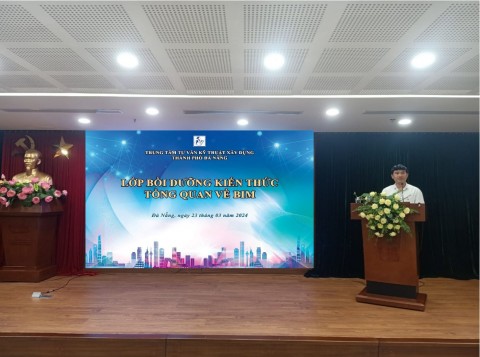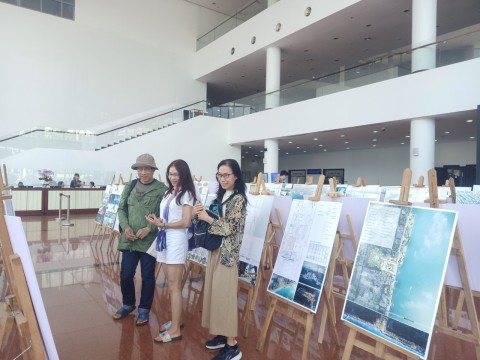III.Design mission
III. DESIGN MISSION/DUTIES
1. Applied code and design standards
- Current codes and standards.
- Code QCXDVN 01:2008/BXD on construction planning.
- Code QCXDVN 10:2014/BXD on construction works to ensure accessibility for people with disabilities.
- Code QCVN 08:2009/BXD on urban underground works.
- Code QCVN 06:2010/BXD on fire prevention for houses and construction works.
- Vietnamese standard TCVN 4319:2012 on Houses and public works - Basic principles for design.
- Foreign design standards (if any) (applicable standards must ensure consistency and compliance with regulations on application of construction codes and standards in construction activities under Circular No. 18/2010/TT-BXD dated 15 October 2010 of Ministry of Construction).
2. Design requirements
2.1. Location, characteristics of the land area, current status of the building as the reference for developing design plans.
a) Location and characteristics of the area:
- Location: No. 42 - 44 Bach Dang Street and No. 31 Tran Phu Street Hai Chau District, Da Nang City.

- Scope of research (with attached drawings): The space and facilities at No. 42-44 Bach Dang Street and No. 31 Tran Phu Street. Expanding towards space and facilities of the City Library, Dien Hai Citadel’s square and the west bank of the Han River.
- Characteristics of land lot No. 42-44 Bach Dang and No.31 Tran Phu:
+ Land area: 8,686 m2
+ North: adjacent to Quang Trung Street
+ South: Adjacent to the General Library
+ West: Adjacent to Tran Phu Street
+ East: Adjacent to Bach Dang Street
b) Current status:
- Current status of Da Nang Museum (at Dien Hai Citadel, subject to relocation): block of 3-storey building, total construction floor area of 3,584m2, of which: 1st floor: 1,224m2; 2nd floor: 1,224m2; 3rd floor: 1,136m2.
- Current status of Lot 42 Bạch Đằng: A 03-storey building dated back to 100 years ago, total construction floor area of 2,421 m2 (with drawings attached).
- Hall of the People’s Council: A 01-storey building with construction area of 1,086m2 (drawings attached).
- The new 2-storey building block with total construction floor area of 916m2 (drawings attached).
- Current status of the 44 Bach Dang building: A 03-storey building dated back to 100 years ago, total floor area of 1,250 m2 (drawings attached).
- Interior yard and garden, fences and gates
- Current state of the 31 Tran Phu Building: A 04-storey building with total construction floor area of 2,360m2 (drawings attached).
- Current status of General Library (drawings attached).
2.2. Design requirements:
- Study and create a design plan for the recondition and upgradation of the lot 42-44 Bach Dang for the use as Da Nang Museum. Ensure that the museum has not only large scale but cultural, historical values of this country and modern traits as well, making it a perfect match for the image of Da Nang- a big city, an economic center in Central Vietnam.
- The boundary of the overall study on the recondition, upgradation plan for the Museum on the basis of the lots No. 42-44 Bach Dang and No. 31 Tran Phu, take into account the appropriate division into investment phases.
3. The plan must meet specific requirements as follows:
3.1. Solution for planning:
Consider the overview of the plan at 42-44 Bach Dang and 31 Tran Phu, make sure that it fits in the general planning of the area, especially with the planning idea of the surrounding square of Dien Hai Citadel, the Da Nang General Library and landscape of Han River’s West bank (drawings attached).
Please take into consideration that there must be a solution for the parking lot as well as car stops for the visitors and museum staff.
3.2. Solution for architecture:
In overall, the plan for lot 42-44 Bach Dang and 31 Tran Phu should be made into one architecture complex, ensuring the harmonious use of function parts, the connections between the current works and the new works. It is necessary to pay much attention to the preservation of the 100 years buildings for they are important witnesses of many history periods of Da Nang City.
The construction works to be newly-built must be in harmony with the current works needed to be protected, and with the surround buildings. Their consistency of design and function, and the modernity as the City’s development trend must be ensured.
Solution for the function parts must satisfy the current demand (facilities and human resources are from the museum at the old address) and the arising needs for development in future.
a) Solution for the function parts organization:
* The office system: including
+ Offices of the Museum leaders: 01 Director Office; 02 Deputy Director Office
+ An office for Education-Media Department (07 employees)
+ An office for Collecting-Displaying and Reserving Department (10 employees)
+ Office for Cultural Heritage Management Department (06 employees)
+ Office for Organization-Administration Department (15 employees, divided into 5 small rooms) Organization-Administration; Accounting-Financial service; Technique-Technology; Housekeeping; Security.
* Artifact storage system: 05 rooms/warehouses
- Warehouse 1: Metal artifacts
- Warehouse 2: Wooden and plastic artifacts.
- Warehouse 3: Paper, textiles, ceramics artifacts
- Warehouse 4: Earthenware and archeological artifacts
- Room handling before storage and restoration of artifacts
* Function rooms of the Museum: including
+ Discovery Room: This is where educational programs for children and students are held. In a place like this, children and students can participate in activities and get their own experience when visiting the Museum. It is also a good environment for the Museum staff to study the psychology characteristics and the needs of young-age guests then apply them in the development strategies for more effective educational activities.
+ Movie Room: Showing documentaries for students and visitors.
+ Conference Room: Large enough to serve about 100 people at the same time. Used for holding conferences, seminars on the Museum’s professional work.
+ Meeting Room: Used for the Museum’s internal meetings and its meetings with partner organizations, units and individuals.
+ Da Nang Cultural Heritage Database Room (satellite station): A database room for the making of documentaries on heritages; A place to search for data on tangible and intangible cultural heritages in Da Nang city for the people in need.
+ Archive of files and documents of the Museum: Store the work files and documents of Offices of the Museum since establishment.
+ Museum Library: Books and professional documents for scientific research at the Museum.
+ Room for meeting delegations and keeping visitors’ luggages
+ Area for services exploitation: Restaurant; café and beverages, souvenir shop, etc.
b) Investment divergence solution:
It is necessary that the plan is made based on the overall study of area 42-44 Bach Dang, 31 Tran Phu. There must be investment divergence with appropriate investment phases. The operation of the Museum must be maintained in every phase.
- Phase 1 (Boundary: No.42 Bach Dang):
+ Keep the 03-storey building built over 100 years. Its inner function space may be renovated, renovate the engineering system.
+ Keep the new 01-storey hall built for the regular meetings of the People’s Council. Its may be used for other functions of the Museum.
+ Recondition of the 02-storey house for the use of administrative office or subsidiary part of the Museum.
+ Recondition of the internal yard: Reorganize the pathways and greenery, landscape. It is possible to add a basement for parking lot, which can be used as warehouse or display zone in future.
+ Dismantle the entire fence around these facilities to create an open, friendly, public serving space and connect with the landscape of the area around Dien Hai Citadel, the view of the Han River.
- Phase 2 (The boundary is expanded to No. 44 Bach Dang and No. 31 Tran Phu):
+ Recondition lot 31 Tran Phu for the subsidiary functions of the Museum.
+ Strategy for the 2-storey house at No.42-44 Bach Dang (keep it or dismantle it to take place for new construction)
+ Organization of traffic to connect works at No. 42-44 Bach Dang and No. 31 Tran Phu, the General Library, Dien Hai Citadel and the West bank of Han River so that they make a historical cultural axis.
3.3. The display contents of the plan (according to the overall display outline):
3.3.1. Practical basis of the relocation of Da Nang Museum to the new location at No. 42-44 Bach Dang:
- Da Nang Museum is displaying, storing and preserving over 27,000 exhibits in the following collections:
+ Da Nang's nature, history and culture from prehistoric to contemporary.
+ Prehistoric-early history archaeological culture
+ Vietnamese ceramics and wood carvings through the ages.
+ History of revolutionary wars
+ Ethnic culture in Da Nang and neighboring provinces.
+ Da Nang intangible culture (tradition craft villages; folk festivals; the arts of tuong; the arts of bai choi, etc.).
+ Collection of Danang sea cultural artifacts
+ Evidence of the war crimes of American in Danang and surrounding areas ...
- Da Nang Museum has many favorable conditions to organize the collection of artifacts for new displays.
- Inheriting the display contents of Da Nang Museum in Dien Hai Citadel
- Location, architecture, landscape of Danang Museum at the location 42-44 Bach Dang has urban architecture history values.
3.3.2. Purpose, construction requirements for the Da Nang Museum at new location:
- Da Nang Museum is a place to store, display and widely introduce to the domestic and international people the physical and spiritual cultural heritage of the historical-cultural tradition of the homeland, of the resident communities of Da Nang and the culture of Central region and Central Highlands.
- Fully show the functions and duties of the Museum, from the viewpoint of a modern museology, in order to serve a large number of local people, domestic people and foreign tourists to visit, learn and study the history of the land and people of Da Nang City.
- The development of display contents in Da Nang Museum in the new location must be updated to new knowledge of museum, scientific content and technology level. The development vision 2030-2050 must be ensured.
- The content and display method of the museum must be scientific, modern, attractive in order to commensurate with the stature of a museum built at the beginning of the 21st century, industrial revolution 4.0, at a big city, an economic center of Central Vietnam, an important trading gateway of the country.
- Da Nang Museum must be real a cultural, educational and entertainment center, located in the master plan of cultural and historical square along the Han River, in which Dien Hai Citadel is the center. At the same time it must be an attractive tourist center of the City and Central region.
3.3.3. Display contents of Da Nang Museum in the new location:
- On the basis of artifacts collections of the Museum, introduce the history of formation and development of Da Nang from the beginning to the present: Nature, people, culture, administrative geography, traces of Ancient inhabitants on the land of Da Nang in the pre-prehistoric period; economy - culture - politics - society, labor and daily life of Da Nang community in the historical process from the 15th century. Through the exhibition contents of the Museum, highlighting the specific and vivid expressions of the long-standing historical and cultural traditions of Da Nang, especially the historical and cultural contents that characterize cultural identity of Da Nang and the Central region and Central Highlands.
- The history of Da Nang, Da Nang people and Da Nang's culture should be placed in relation to the Central Region, the Central Highlands and the whole country.
- Pay attention to the highlights of the history of social development in Da Nang such as: Leading in the resistance against the French invasion in the middle of the nineteenth century; the arduous and heroic resistance against the American army to save the country of Da Nang’s soldiers and people; The Communist Party organization and leadership role of the Party; Da Nang is the first landing place for American expeditionary troops, a base of the largest military complex in South Vietnam of the American empire, the process of conducting American invasion war and American war credentials in Da Nang and surrounding areas; Local economic, cultural and social achievements in 30 years of renovation, especially since Da Nang City was an independent administrative unit under the Central Government. Emphasize the history of Da Nang urban development from history to present.
- Focus on introducing geographical and historical and cultural characteristics of Da Nang such as: a large seaport and port city located in the middle of the country, having a key economic and military position; the administrative geography is less stable, has many changes in history, an independent administrative unit late, although it is the original land of the ancient Kingdom of Champa, the indigenous inhabitants are few, most of the residents come to live here for about 100 years ...
- Express in a detailed, vivid way of the economic life and daily life of Da Nang resident classes in historical periods; the culture of the community of residents and ethnic minorities co-reside and nearly-reside in Da Nang.
- Honoring historical figures, famous political, military, cultural, artistic, scientific individuals who positively influenced local development in historical periods; the famous people of Da Nang who have important contributions/influences on the development process of national history.
- Expand the exhibition to introduce the culture of ethnic groups in Central regions and Central Highlands.
- Expand the display of Vietnamese marine culture with the focus is Central Sea culture.
3.3.4. Requirements for display solution in the new location:
- The exhibition must be modern, but still inherit and enhance the contents and display elements of Da Nang Museum at Dien Hai Citadel.
- New exhibitions must take the collection of artifacts and artifacts groups as center, expressing clear and coherent content.
- Using new technologies in display (digital technology, 3D, multimedia, etc.) to ensure the display form, modernity but remains lively and attractive. Use wisely of the positive support of the modern audiovisual equipment, fine art works and other advanced technical facilities.
- Recreate some historical scenes, real life activities to show the highlights of the content and create the attractiveness for Da Nang Museum.
- Create own unique traces in the display style.
3.3.5. Display contents: including 04 areas
- Regular display (in the Museum)
- Thematic display (in the Museum)
- Short-term thematic display (indoor)
- Outdoor display
Based on the actual area, space and architectural works at the lot 42 & 44 Bach Dang, the status of the content and display system of Da Nang Museum in Dien Hai Citadel, the current collections or additional collections of the Museum in the current period, the contents of the Da Nang Museum display when being transferred to the new location will be adjusted to suit the development trend of the museum. Modern and suitable for the functions of the building floors. As follows:
a) Regular display: Includes 4 parts with display area
* Part 1 - INTRODUCTION
Opening the regular display system of the Da Nang Museum is the state-room, the theme of display includes: Overview of the display contents, overview of Da Nang in the context of Central Region and the country from past to present, Da Nang map, museum visit map, information desk.
* Part 2 - HISTORY OF NATURE AND DA NANG PEOPLE
- Nature: Introduction to typical cultural landscapes of Da Nang. Terrain of midland, mountainous, river and island areas. Climate - hydrological. Geology - minerals. Marine forest ecosystem. Historical and cultural relics and landscapes.
- The first residents: Collection of prehistoric archeological artifacts, preliminary human traces in Da Nang.
- Modern residents' picture: The process of settling of ethnic groups in Da Nang has formed the appearance of current Da Nang residents.
* Part 3 – HISTORY OF DA NANG URBAN DEVELOPMENT
- Governments of periods: Feudal; French; Under the Republic of Vietnam period; Da Nang after 1975.
+ Administrative organization and ruling apparatus of French in Tourane, the process of formation and development of Da Nang urbanization before 1945, the domination of French, the suffering of the laborers, the cultural transformation Vietnamese - French in the life of Da Nang residents.
+ The process of formation and development of urbanization in Da Nang 1945 - 1975, the continuation of Vietnamese - American culture in the life of Da Nang residents.
+ Da Nang in 10 years after liberation, Da Nang in 30 years of national renewal.
- Architecture and development planning of Da Nang: Da Nang architecture; Traffic net; Da Nang Industry; Trading and Services; Press - Medias; Da Nang planning for future development.
- Social history of Da Nang.
+ Da Nang opened the resistance war against French colonial aggression: The Battle of 1847; The battle of 1858 - 1960.
+ Da Nang in the cause of fighting for national independence: The activities period of Nghia Hoi and the Duy Tan Movement; Patriotic movements in the early twentieth century; The struggles of workers; The first Communist Party grassroots organization in Da Nang. Da Nang Party Committee and Quang Nam Party Committee in the years 1930 - 1945; The struggles of Da Nang people under the leadership of the Party from 1930 - 1945; Revolution of August 1945 and establishment of revolutionary government of Da Nang city.
+ Da Nang in 30 years of resistance to national independence and unification: the political system, military power and grip and repression of French - American; Consolidate and build revolutionary government; Resistance against French colonial aggression; Resistance against American imperialism invaded.
- Da Nang - Hero city: The general thematic 117 years of anti-foreign invasion of Da Nang people (1858-1975) and the process of building and developing the city in peace; Introducing typical historical events and characters; Introducing Heroes of individuals and collectives in fighting to defend the Fatherland and in construction.
* Part 4 – Culture:
- Culture of ethnic groups:
+ Culture of ethnic minorities in Quang Nam - Da Nang and Central and Central Highlands regions
+ Displaying in the form of a combination of each ethnic group, highlighting the specific characteristics of each ethnic minorities group in the mountainous areas of Quang Nam and Da Nang to show clearly characteristics of the material and spiritual life of the ethnic groups such as Co Tu, Xo Dang, Gie - Trieng, Co ...
+ Material culture and spiritual culture of Vietnamese people.
+ Spaces: Costume; Food culture; Music; Community cultural activities; Production culture.
- Sea culture: Sea and the process of formation and development of seaport cities; Marine ecology shows diversity of marine resources; Cultural imprint of Da Nang sea; History of sea and island sovereignty; Religious beliefs in Central Vietnam Sea; Techniques for building ships, boats and seafaring; Fishermen culture.
- Agricultural culture: Prehistoric times, early times of Da Nang in Quang land cultural and historical area; Showcasing collections of museum-owned antiques; Agricultural traditions and indigenous inhabitants of Da Nang; Da Nang traditional craft industry.
- Urban culture: Urban living lifestyle; business culture.
- Performing arts: Traditional folk arts include: Bai Choi; Tuong; Modern art; Stage; Music.
b) Thematic display content - War evidence of the US and surrounding areas:
- Conspiracy and the War of aggression by the US government.
- US military bombardment operations and campaign
- Massacres, shootings, looting, torture.
- Destructive bombings
- The world supports Vietnam's righteous war
- Vietnam war records
- Charitable activities to overcome the consequences of war in Vietnam
c) Exhibition contents under short-term thematic:
- Exhibitions are serving the immediate political, economic and cultural tasks of the locality.
- Introduce collections of artifacts in the un-exhibited storage of the museum, or new artifacts collected in the year or for several years.
- Display short-term thematic, exhibitions of domestic and international museums.
- Organize folk cultural activities; perform various forms of traditional art activities and folk games under periodic time.
- Organize the traditional festivals of ethnic minorities periodically (with the direct participation of ethnic minorities)
d) Outdoor display content:
- Create playing and learning spaces for teenagers.
- Some war artifacts with large cubes such as airplanes, tanks, rifles, bombs and bullets .... used in resistance.
4. Engineering works:
- Technical systems, construction work equipment (electricity, communication, security, elevators, air conditioning, water supply, fire and explosion prevention, environmental protection ...) ensuring synchronization, advanced, high safety, in accordance with current standards.
- Use of modern display techniques, applying advanced technology.
- Use of construction technology and appropriate construction materials to reduce investment costs.
- There is modern structure, safe, sustainable, earthquake resistant, ensuring feasibility.
- There is an energy saving solution; natural lighting and ventilation; minimizing the use of air conditioning.
5. Economics.
Budget for construction investment is saving and suitable with local conditions, proper maintenance and economical operation.
6. Other requirements.
- Consistent with the climate and natural conditions of the locality
- Meeting the psychoactive needs and regional characteristics of the locality
- It is possible to propose other contents to meet the highest requirements for using the project.
- Ability to expand in the future.
1. Applied code and design standards
- Current codes and standards.
- Code QCXDVN 01:2008/BXD on construction planning.
- Code QCXDVN 10:2014/BXD on construction works to ensure accessibility for people with disabilities.
- Code QCVN 08:2009/BXD on urban underground works.
- Code QCVN 06:2010/BXD on fire prevention for houses and construction works.
- Vietnamese standard TCVN 4319:2012 on Houses and public works - Basic principles for design.
- Foreign design standards (if any) (applicable standards must ensure consistency and compliance with regulations on application of construction codes and standards in construction activities under Circular No. 18/2010/TT-BXD dated 15 October 2010 of Ministry of Construction).
2. Design requirements
2.1. Location, characteristics of the land area, current status of the building as the reference for developing design plans.
a) Location and characteristics of the area:
- Location: No. 42 - 44 Bach Dang Street and No. 31 Tran Phu Street Hai Chau District, Da Nang City.

- Scope of research (with attached drawings): The space and facilities at No. 42-44 Bach Dang Street and No. 31 Tran Phu Street. Expanding towards space and facilities of the City Library, Dien Hai Citadel’s square and the west bank of the Han River.
- Characteristics of land lot No. 42-44 Bach Dang and No.31 Tran Phu:
+ Land area: 8,686 m2
+ North: adjacent to Quang Trung Street
+ South: Adjacent to the General Library
+ West: Adjacent to Tran Phu Street
+ East: Adjacent to Bach Dang Street
b) Current status:
- Current status of Da Nang Museum (at Dien Hai Citadel, subject to relocation): block of 3-storey building, total construction floor area of 3,584m2, of which: 1st floor: 1,224m2; 2nd floor: 1,224m2; 3rd floor: 1,136m2.
- Current status of Lot 42 Bạch Đằng: A 03-storey building dated back to 100 years ago, total construction floor area of 2,421 m2 (with drawings attached).
- Hall of the People’s Council: A 01-storey building with construction area of 1,086m2 (drawings attached).
- The new 2-storey building block with total construction floor area of 916m2 (drawings attached).
- Current status of the 44 Bach Dang building: A 03-storey building dated back to 100 years ago, total floor area of 1,250 m2 (drawings attached).
- Interior yard and garden, fences and gates
- Current state of the 31 Tran Phu Building: A 04-storey building with total construction floor area of 2,360m2 (drawings attached).
- Current status of General Library (drawings attached).
2.2. Design requirements:
- Study and create a design plan for the recondition and upgradation of the lot 42-44 Bach Dang for the use as Da Nang Museum. Ensure that the museum has not only large scale but cultural, historical values of this country and modern traits as well, making it a perfect match for the image of Da Nang- a big city, an economic center in Central Vietnam.
- The boundary of the overall study on the recondition, upgradation plan for the Museum on the basis of the lots No. 42-44 Bach Dang and No. 31 Tran Phu, take into account the appropriate division into investment phases.
3. The plan must meet specific requirements as follows:
3.1. Solution for planning:
Consider the overview of the plan at 42-44 Bach Dang and 31 Tran Phu, make sure that it fits in the general planning of the area, especially with the planning idea of the surrounding square of Dien Hai Citadel, the Da Nang General Library and landscape of Han River’s West bank (drawings attached).
Please take into consideration that there must be a solution for the parking lot as well as car stops for the visitors and museum staff.
3.2. Solution for architecture:
In overall, the plan for lot 42-44 Bach Dang and 31 Tran Phu should be made into one architecture complex, ensuring the harmonious use of function parts, the connections between the current works and the new works. It is necessary to pay much attention to the preservation of the 100 years buildings for they are important witnesses of many history periods of Da Nang City.
The construction works to be newly-built must be in harmony with the current works needed to be protected, and with the surround buildings. Their consistency of design and function, and the modernity as the City’s development trend must be ensured.
Solution for the function parts must satisfy the current demand (facilities and human resources are from the museum at the old address) and the arising needs for development in future.
a) Solution for the function parts organization:
* The office system: including
+ Offices of the Museum leaders: 01 Director Office; 02 Deputy Director Office
+ An office for Education-Media Department (07 employees)
+ An office for Collecting-Displaying and Reserving Department (10 employees)
+ Office for Cultural Heritage Management Department (06 employees)
+ Office for Organization-Administration Department (15 employees, divided into 5 small rooms) Organization-Administration; Accounting-Financial service; Technique-Technology; Housekeeping; Security.
* Artifact storage system: 05 rooms/warehouses
- Warehouse 1: Metal artifacts
- Warehouse 2: Wooden and plastic artifacts.
- Warehouse 3: Paper, textiles, ceramics artifacts
- Warehouse 4: Earthenware and archeological artifacts
- Room handling before storage and restoration of artifacts
* Function rooms of the Museum: including
+ Discovery Room: This is where educational programs for children and students are held. In a place like this, children and students can participate in activities and get their own experience when visiting the Museum. It is also a good environment for the Museum staff to study the psychology characteristics and the needs of young-age guests then apply them in the development strategies for more effective educational activities.
+ Movie Room: Showing documentaries for students and visitors.
+ Conference Room: Large enough to serve about 100 people at the same time. Used for holding conferences, seminars on the Museum’s professional work.
+ Meeting Room: Used for the Museum’s internal meetings and its meetings with partner organizations, units and individuals.
+ Da Nang Cultural Heritage Database Room (satellite station): A database room for the making of documentaries on heritages; A place to search for data on tangible and intangible cultural heritages in Da Nang city for the people in need.
+ Archive of files and documents of the Museum: Store the work files and documents of Offices of the Museum since establishment.
+ Museum Library: Books and professional documents for scientific research at the Museum.
+ Room for meeting delegations and keeping visitors’ luggages
+ Area for services exploitation: Restaurant; café and beverages, souvenir shop, etc.
b) Investment divergence solution:
It is necessary that the plan is made based on the overall study of area 42-44 Bach Dang, 31 Tran Phu. There must be investment divergence with appropriate investment phases. The operation of the Museum must be maintained in every phase.
- Phase 1 (Boundary: No.42 Bach Dang):
+ Keep the 03-storey building built over 100 years. Its inner function space may be renovated, renovate the engineering system.
+ Keep the new 01-storey hall built for the regular meetings of the People’s Council. Its may be used for other functions of the Museum.
+ Recondition of the 02-storey house for the use of administrative office or subsidiary part of the Museum.
+ Recondition of the internal yard: Reorganize the pathways and greenery, landscape. It is possible to add a basement for parking lot, which can be used as warehouse or display zone in future.
+ Dismantle the entire fence around these facilities to create an open, friendly, public serving space and connect with the landscape of the area around Dien Hai Citadel, the view of the Han River.
- Phase 2 (The boundary is expanded to No. 44 Bach Dang and No. 31 Tran Phu):
+ Recondition lot 31 Tran Phu for the subsidiary functions of the Museum.
+ Strategy for the 2-storey house at No.42-44 Bach Dang (keep it or dismantle it to take place for new construction)
+ Organization of traffic to connect works at No. 42-44 Bach Dang and No. 31 Tran Phu, the General Library, Dien Hai Citadel and the West bank of Han River so that they make a historical cultural axis.
3.3. The display contents of the plan (according to the overall display outline):
3.3.1. Practical basis of the relocation of Da Nang Museum to the new location at No. 42-44 Bach Dang:
- Da Nang Museum is displaying, storing and preserving over 27,000 exhibits in the following collections:
+ Da Nang's nature, history and culture from prehistoric to contemporary.
+ Prehistoric-early history archaeological culture
+ Vietnamese ceramics and wood carvings through the ages.
+ History of revolutionary wars
+ Ethnic culture in Da Nang and neighboring provinces.
+ Da Nang intangible culture (tradition craft villages; folk festivals; the arts of tuong; the arts of bai choi, etc.).
+ Collection of Danang sea cultural artifacts
+ Evidence of the war crimes of American in Danang and surrounding areas ...
- Da Nang Museum has many favorable conditions to organize the collection of artifacts for new displays.
- Inheriting the display contents of Da Nang Museum in Dien Hai Citadel
- Location, architecture, landscape of Danang Museum at the location 42-44 Bach Dang has urban architecture history values.
3.3.2. Purpose, construction requirements for the Da Nang Museum at new location:
- Da Nang Museum is a place to store, display and widely introduce to the domestic and international people the physical and spiritual cultural heritage of the historical-cultural tradition of the homeland, of the resident communities of Da Nang and the culture of Central region and Central Highlands.
- Fully show the functions and duties of the Museum, from the viewpoint of a modern museology, in order to serve a large number of local people, domestic people and foreign tourists to visit, learn and study the history of the land and people of Da Nang City.
- The development of display contents in Da Nang Museum in the new location must be updated to new knowledge of museum, scientific content and technology level. The development vision 2030-2050 must be ensured.
- The content and display method of the museum must be scientific, modern, attractive in order to commensurate with the stature of a museum built at the beginning of the 21st century, industrial revolution 4.0, at a big city, an economic center of Central Vietnam, an important trading gateway of the country.
- Da Nang Museum must be real a cultural, educational and entertainment center, located in the master plan of cultural and historical square along the Han River, in which Dien Hai Citadel is the center. At the same time it must be an attractive tourist center of the City and Central region.
3.3.3. Display contents of Da Nang Museum in the new location:
- On the basis of artifacts collections of the Museum, introduce the history of formation and development of Da Nang from the beginning to the present: Nature, people, culture, administrative geography, traces of Ancient inhabitants on the land of Da Nang in the pre-prehistoric period; economy - culture - politics - society, labor and daily life of Da Nang community in the historical process from the 15th century. Through the exhibition contents of the Museum, highlighting the specific and vivid expressions of the long-standing historical and cultural traditions of Da Nang, especially the historical and cultural contents that characterize cultural identity of Da Nang and the Central region and Central Highlands.
- The history of Da Nang, Da Nang people and Da Nang's culture should be placed in relation to the Central Region, the Central Highlands and the whole country.
- Pay attention to the highlights of the history of social development in Da Nang such as: Leading in the resistance against the French invasion in the middle of the nineteenth century; the arduous and heroic resistance against the American army to save the country of Da Nang’s soldiers and people; The Communist Party organization and leadership role of the Party; Da Nang is the first landing place for American expeditionary troops, a base of the largest military complex in South Vietnam of the American empire, the process of conducting American invasion war and American war credentials in Da Nang and surrounding areas; Local economic, cultural and social achievements in 30 years of renovation, especially since Da Nang City was an independent administrative unit under the Central Government. Emphasize the history of Da Nang urban development from history to present.
- Focus on introducing geographical and historical and cultural characteristics of Da Nang such as: a large seaport and port city located in the middle of the country, having a key economic and military position; the administrative geography is less stable, has many changes in history, an independent administrative unit late, although it is the original land of the ancient Kingdom of Champa, the indigenous inhabitants are few, most of the residents come to live here for about 100 years ...
- Express in a detailed, vivid way of the economic life and daily life of Da Nang resident classes in historical periods; the culture of the community of residents and ethnic minorities co-reside and nearly-reside in Da Nang.
- Honoring historical figures, famous political, military, cultural, artistic, scientific individuals who positively influenced local development in historical periods; the famous people of Da Nang who have important contributions/influences on the development process of national history.
- Expand the exhibition to introduce the culture of ethnic groups in Central regions and Central Highlands.
- Expand the display of Vietnamese marine culture with the focus is Central Sea culture.
3.3.4. Requirements for display solution in the new location:
- The exhibition must be modern, but still inherit and enhance the contents and display elements of Da Nang Museum at Dien Hai Citadel.
- New exhibitions must take the collection of artifacts and artifacts groups as center, expressing clear and coherent content.
- Using new technologies in display (digital technology, 3D, multimedia, etc.) to ensure the display form, modernity but remains lively and attractive. Use wisely of the positive support of the modern audiovisual equipment, fine art works and other advanced technical facilities.
- Recreate some historical scenes, real life activities to show the highlights of the content and create the attractiveness for Da Nang Museum.
- Create own unique traces in the display style.
3.3.5. Display contents: including 04 areas
- Regular display (in the Museum)
- Thematic display (in the Museum)
- Short-term thematic display (indoor)
- Outdoor display
Based on the actual area, space and architectural works at the lot 42 & 44 Bach Dang, the status of the content and display system of Da Nang Museum in Dien Hai Citadel, the current collections or additional collections of the Museum in the current period, the contents of the Da Nang Museum display when being transferred to the new location will be adjusted to suit the development trend of the museum. Modern and suitable for the functions of the building floors. As follows:
a) Regular display: Includes 4 parts with display area
* Part 1 - INTRODUCTION
Opening the regular display system of the Da Nang Museum is the state-room, the theme of display includes: Overview of the display contents, overview of Da Nang in the context of Central Region and the country from past to present, Da Nang map, museum visit map, information desk.
* Part 2 - HISTORY OF NATURE AND DA NANG PEOPLE
- Nature: Introduction to typical cultural landscapes of Da Nang. Terrain of midland, mountainous, river and island areas. Climate - hydrological. Geology - minerals. Marine forest ecosystem. Historical and cultural relics and landscapes.
- The first residents: Collection of prehistoric archeological artifacts, preliminary human traces in Da Nang.
- Modern residents' picture: The process of settling of ethnic groups in Da Nang has formed the appearance of current Da Nang residents.
* Part 3 – HISTORY OF DA NANG URBAN DEVELOPMENT
- Governments of periods: Feudal; French; Under the Republic of Vietnam period; Da Nang after 1975.
+ Administrative organization and ruling apparatus of French in Tourane, the process of formation and development of Da Nang urbanization before 1945, the domination of French, the suffering of the laborers, the cultural transformation Vietnamese - French in the life of Da Nang residents.
+ The process of formation and development of urbanization in Da Nang 1945 - 1975, the continuation of Vietnamese - American culture in the life of Da Nang residents.
+ Da Nang in 10 years after liberation, Da Nang in 30 years of national renewal.
- Architecture and development planning of Da Nang: Da Nang architecture; Traffic net; Da Nang Industry; Trading and Services; Press - Medias; Da Nang planning for future development.
- Social history of Da Nang.
+ Da Nang opened the resistance war against French colonial aggression: The Battle of 1847; The battle of 1858 - 1960.
+ Da Nang in the cause of fighting for national independence: The activities period of Nghia Hoi and the Duy Tan Movement; Patriotic movements in the early twentieth century; The struggles of workers; The first Communist Party grassroots organization in Da Nang. Da Nang Party Committee and Quang Nam Party Committee in the years 1930 - 1945; The struggles of Da Nang people under the leadership of the Party from 1930 - 1945; Revolution of August 1945 and establishment of revolutionary government of Da Nang city.
+ Da Nang in 30 years of resistance to national independence and unification: the political system, military power and grip and repression of French - American; Consolidate and build revolutionary government; Resistance against French colonial aggression; Resistance against American imperialism invaded.
- Da Nang - Hero city: The general thematic 117 years of anti-foreign invasion of Da Nang people (1858-1975) and the process of building and developing the city in peace; Introducing typical historical events and characters; Introducing Heroes of individuals and collectives in fighting to defend the Fatherland and in construction.
* Part 4 – Culture:
- Culture of ethnic groups:
+ Culture of ethnic minorities in Quang Nam - Da Nang and Central and Central Highlands regions
+ Displaying in the form of a combination of each ethnic group, highlighting the specific characteristics of each ethnic minorities group in the mountainous areas of Quang Nam and Da Nang to show clearly characteristics of the material and spiritual life of the ethnic groups such as Co Tu, Xo Dang, Gie - Trieng, Co ...
+ Material culture and spiritual culture of Vietnamese people.
+ Spaces: Costume; Food culture; Music; Community cultural activities; Production culture.
- Sea culture: Sea and the process of formation and development of seaport cities; Marine ecology shows diversity of marine resources; Cultural imprint of Da Nang sea; History of sea and island sovereignty; Religious beliefs in Central Vietnam Sea; Techniques for building ships, boats and seafaring; Fishermen culture.
- Agricultural culture: Prehistoric times, early times of Da Nang in Quang land cultural and historical area; Showcasing collections of museum-owned antiques; Agricultural traditions and indigenous inhabitants of Da Nang; Da Nang traditional craft industry.
- Urban culture: Urban living lifestyle; business culture.
- Performing arts: Traditional folk arts include: Bai Choi; Tuong; Modern art; Stage; Music.
b) Thematic display content - War evidence of the US and surrounding areas:
- Conspiracy and the War of aggression by the US government.
- US military bombardment operations and campaign
- Massacres, shootings, looting, torture.
- Destructive bombings
- The world supports Vietnam's righteous war
- Vietnam war records
- Charitable activities to overcome the consequences of war in Vietnam
c) Exhibition contents under short-term thematic:
- Exhibitions are serving the immediate political, economic and cultural tasks of the locality.
- Introduce collections of artifacts in the un-exhibited storage of the museum, or new artifacts collected in the year or for several years.
- Display short-term thematic, exhibitions of domestic and international museums.
- Organize folk cultural activities; perform various forms of traditional art activities and folk games under periodic time.
- Organize the traditional festivals of ethnic minorities periodically (with the direct participation of ethnic minorities)
d) Outdoor display content:
- Create playing and learning spaces for teenagers.
- Some war artifacts with large cubes such as airplanes, tanks, rifles, bombs and bullets .... used in resistance.
4. Engineering works:
- Technical systems, construction work equipment (electricity, communication, security, elevators, air conditioning, water supply, fire and explosion prevention, environmental protection ...) ensuring synchronization, advanced, high safety, in accordance with current standards.
- Use of modern display techniques, applying advanced technology.
- Use of construction technology and appropriate construction materials to reduce investment costs.
- There is modern structure, safe, sustainable, earthquake resistant, ensuring feasibility.
- There is an energy saving solution; natural lighting and ventilation; minimizing the use of air conditioning.
5. Economics.
Budget for construction investment is saving and suitable with local conditions, proper maintenance and economical operation.
6. Other requirements.
- Consistent with the climate and natural conditions of the locality
- Meeting the psychoactive needs and regional characteristics of the locality
- It is possible to propose other contents to meet the highest requirements for using the project.
- Ability to expand in the future.
Tác giả bài viết: Thanh Minh
Tags: quang trung, bạch đằng
Ý kiến bạn đọc
Bạn cần đăng nhập với tư cách là Thành viên chính thức để có thể bình luận
Tin xem nhiều
-
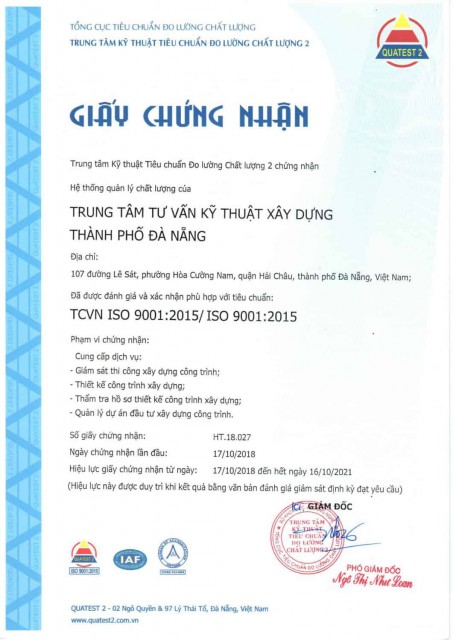 Trung tâm Tư vấn Kỹ thuật xây dựng Thành phố Đà Nẵng nhận “Chứng nhận Hệ thống quản lý chất lượng theo tiêu chuẩn ISO 9001:2015”
Trung tâm Tư vấn Kỹ thuật xây dựng Thành phố Đà Nẵng nhận “Chứng nhận Hệ thống quản lý chất lượng theo tiêu chuẩn ISO 9001:2015”
-
 Bổ nhiệm Phó Giám đốc Trung tâm Tư vấn kỹ thuật xây dựng Đà Nẵng
Bổ nhiệm Phó Giám đốc Trung tâm Tư vấn kỹ thuật xây dựng Đà Nẵng
-
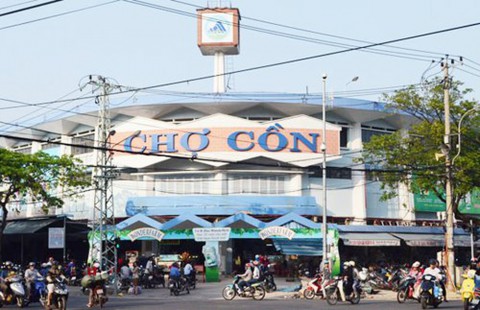 Thông báo trưng bày sản phẩm dự thi Cuộc thi Phương án kiến trúc Chợ Cồn
Thông báo trưng bày sản phẩm dự thi Cuộc thi Phương án kiến trúc Chợ Cồn
-
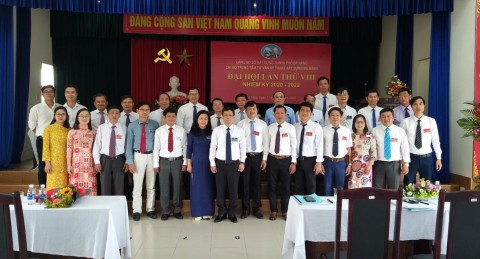 Trung tâm Tư vấn kỹ thuật xây dựng thành phố Đà Nẵng được Chủ tịch UBND thành phố bổ sung nhiều nhiệm vụ quan trọng.
Trung tâm Tư vấn kỹ thuật xây dựng thành phố Đà Nẵng được Chủ tịch UBND thành phố bổ sung nhiều nhiệm vụ quan trọng.
-
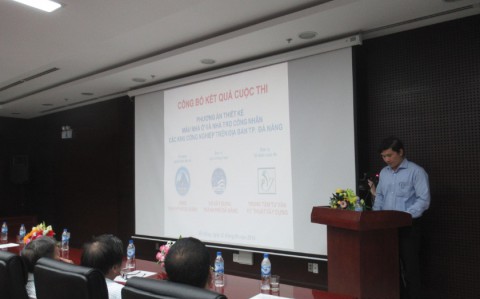 Trao giải cuộc thi Phương án kiến trúc mẫu nhà ở, nhà trọ công nhân các khu công nghiệp
Trao giải cuộc thi Phương án kiến trúc mẫu nhà ở, nhà trọ công nhân các khu công nghiệp
Tin mới
Thăm dò ý kiến

Văn phòng:
107 Lê Sát, Hoà Cường Nam, Hải Châu, Đà Nẵng
Điện thoại:
0236.3621925



